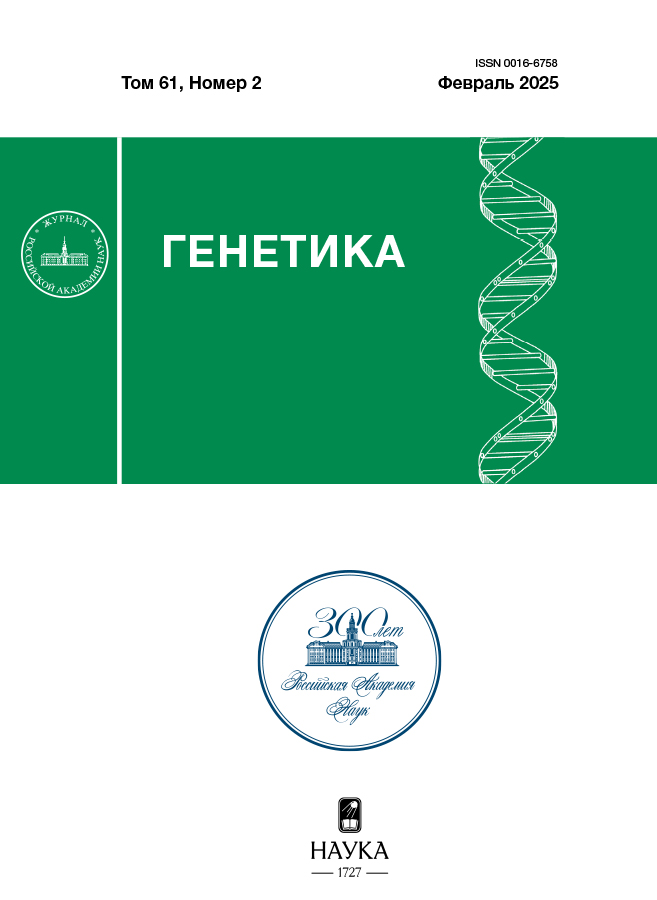The β-actin and 36B4 Genes in the Soft Coral Sclerophytum heterospiculatum (Verseveldt, 1970)
- Authors: Bizikashvili E.T.1, Shamshurina E.V.1, Sikorskaya T.V.1
-
Affiliations:
- Zhirmunsky National Scientific Center of Marine Biology, Far East Branch, Russian Academy of Sciences
- Issue: Vol 61, No 2 (2025)
- Pages: 98-102
- Section: КРАТКИЕ СООБЩЕНИЯ
- URL: https://jdigitaldiagnostics.com/0016-6758/article/view/687014
- DOI: https://doi.org/10.31857/S0016675825020101
- EDN: https://elibrary.ru/uuzowt
- ID: 687014
Cite item
Abstract
Coral polyps are the subject of various studies, including in the field of molecular biology. At the moment, much attention is being paid to molecular studies of corals of the Hexacorallia subclass. For this purpose, we identified and characterized the sequences of the β-actin and 36B4 genes from the soft coral Sclerophytum heterospiculatum (Verseveldt, 1970).The 36B4 and β-actin genes are necessary for the normal functioning of cells and are highly conservative between taxa, which are confirmed by the phylogenetic tree obtained in this work.
Keywords
Full Text
About the authors
E. T. Bizikashvili
Zhirmunsky National Scientific Center of Marine Biology, Far East Branch, Russian Academy of Sciences
Author for correspondence.
Email: bilielena801@gmail.com
Russian Federation, Vladivostok, 690041
E. V. Shamshurina
Zhirmunsky National Scientific Center of Marine Biology, Far East Branch, Russian Academy of Sciences
Email: bilielena801@gmail.com
Russian Federation, Vladivostok, 690041
T. V. Sikorskaya
Zhirmunsky National Scientific Center of Marine Biology, Far East Branch, Russian Academy of Sciences
Email: bilielena801@gmail.com
Russian Federation, Vladivostok, 690041
References
- Daly M., Brugler M.R., Cartwright P. et al. The phylum Cnidaria: A review of phylogenetic patterns and diversity 300 years after Linnaeus* // Zootaxa. 2007. V. 1668. P. 127–182. https://doi.org/10.5281/zenodo.180149
- Tursch B., Tursch A. The soft coral community on a sheltered reef quadrat at Laing Island (Papua New Guinea) // Mar. Biol. 1982. V. 68. P. 321–332. https://doi.org/10.1007/bf00409597
- Fabricius K.E. Soft coral abundance on the central Great Barrier Reef: Effects of Acanthaster planci, space availability, and aspects of the physical environment // Coral Reefs. 1997. V. 16. P. 159–167. https://doi.org/10.1007/s003380050070
- Boilard A., Dube C.E., Gruet C. et al. Defining coral bleaching as a microbial dysbiosis within the coral holobiont // Microorganisms. 2020. V. 8. https://doi.org/10.3390/microorganisms8111682
- Sikorskaya T.V., Ermolenko E.V. Changes of phospholipid molecular species profile upon bleaching and subsequent restoration of coral sinularia heterospiculata // Chem. Nat. Compd. 2024. V. 60. P. 215–219. https://doi.org/10.1007/s10600-024-04291-w
- Dean J.M., Lodhi I.J. Structural and functional roles of ether lipids // Protein Cell. 2018. V. 9. P. 196–206. https://doi.org/10.1007/s13238-017-0423-5
- Karge W.H., Schaefer E.J., Ordovas J.M. Quantification of mRNA by polymerase chain reaction (PCR) using an internal standard and a nonradioactive detection method // Methods Mol. Biol. 1998. V. 110. P. 43–61. https://doi.org/10.1385/1-59259-582-0:43
- Kozera B., Rapacz M. Reference genes in real-time PCR // J. Appl. Genet. 2013. V. 54. P. 391–406. https://doi.org/10.1007/s13353-013-0173-x
- Nguyen L.-T., Schmidt H.A., von Haeseler A. et al. IQ-TREE: A fast and effective stochastic algorithm for estimating maximum-likelihood phylogenies // Mol. Biol. Evol. 2015. V. 32. P. 268–274. https://doi.org/10.1093/molbev/msu300
- Hoang D.T., Chernomor O., von Haeseler A. et al. Ufboot2: Improving the ultrafast bootstrap appro-ximation // Mol. Biol. Evol. 2018. V. 35. P. 518–522. https://doi.org/10.1093/molbev/msx281
- Kalyaanamoorthy S., Minh B.Q., Wong T.K.F. et al. ModelFinder: Fast model selection for accurate phylogenetic estimates // Nat. Methods. 2017. V. 14. P. 587–589. https://doi.org/10.1038/nmeth.4285
- Gagou M., Ballesta J.P., Kouyanou S. Cloning and characterization of the ribosomal protein CcP0 of the medfly Ceratitis capitata // Insect. Mol. Biol. 2000. V. 9. P. 47–55. https://doi.org/10.1046/j.1365-2583.2000.00156.x
- Kabsch W., Vandekerckhove J. Structure and function of actin // Annu. Rev. Biophys. Biomol. Struct. 1992. V. 21. P. 49–76. https://doi.org/10.1146/annurev.bb.21.060192.000405
- Ishii K., Washio T., Uechi T. et al. Characteristics and clustering of human ribosomal protein genes // BMC Genomics. 2006. V. 7. P. 37. https://doi.org/10.1186/1471-2164-7-37
Supplementary files











